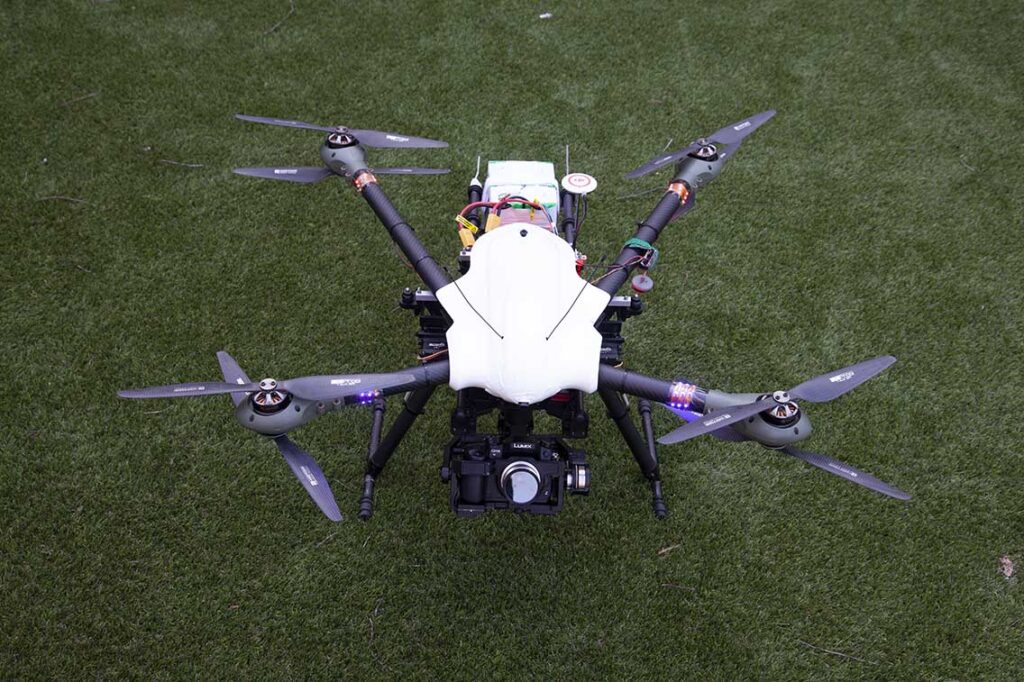Drone set-up and the 10 Things a pro should know when buying a new one

LA Media has been flying drones for the last seven years. We’ve flown for Netflix shows, like The Crown and The Witcher, feature film productions, high-end commercials and have done lots of work for television broadcasters from all around the world. Check out our drone reels at lamedia.co.uk or visit our YouTube channel to see what we do.
Now we are putting together a new drone set-up for 2021. It's a great and exciting project and our new package is the result of our extensive experience. We believe it will help keep us at the top of the drone tree and that it could also help you to get started.
Details of our new drone setup will appear in the following blog but meanwhile here are some of the things you should consider if you are about to go out on your own.
Buying a drone
Buy the drone you need (not the one you like). Spend a good deal of time considering what you want your drone set-up to do before you spend any money on it.
Creative filming, survey work, health and safety inspections, area mapping, emergency services… it's your decision. Remember - it will be an expensive disappointment if you buy a drone not fit for your purpose.
Tell any retailer what you need it for and they should have the expertise to steer you in the right direction. Spend a lot of time looking at reviews of the drones you are considering and listen to what is being said. It costs you nothing but time and it all helps you make the best decision.
10 Things to consider
1. Camera - what camera does your drone carry? This will determine the quality of the picture you can offer a client and establishes the size and power of the drone you need to be flying.
2. Interchangeable lens system - does your drone camera offer a choice of lenses? This is about being able to give a variety of choices to your client when it comes to shot options.
3. Flight time - how long can your drone stay in the air? Clients like to fly all the time so you must give consideration to flight durations and establish how many batteries you will need to buy should you want to fly a typical eight-hour day and include them in your drone set-up accordingly.
4. Recharge to recycle - will you need to recharge/recycle flight batteries during a shoot day? If the answer is yes, how will you do it? Adding a portable generator to your drone set-up is a great way of doing this but often requires a second person to monitor and operate it and can also be expensive.
5. Viewing the shot - how will your client view the shots you are flying? While it can be a simple as looking over your shoulder at your controller device e.g. your phone, you may want to consider other means such as an HDMI cable feed from your controller (if it has one) to a separate client monitor. More spending for you but makes for happier clients.
6. File types and formats - what file types and formats can your drone camera deliver to the client? Often overlooked as a detail until the end of a day's flying it is an issue that can cause you real problems. The data transfer time of your shots should also be built into your flying schedule. You should know what file type is best suited to the client's post-production workflow and will the client bring you a drive to dump things onto or are they expecting you to supply one? You should ask all these questions before the flight day. The more file types and formats your drone can deliver the better for both you and your client.
7. Data Cards - always have plenty of spares as you may need to change them out if they get filled up. It's also good practice that before you perform any risky flight, such as over water, put a new card in. This makes sure that you do not lose any data in the event of a catastrophic incident occurring.
8. Take-off/landing pad - this is a great part of your health and safety protocol as it is easy to see and therefore those around you can avoid it without difficulty. It also gives you a dust-free platform and a safe flat surface when you are on ground that is uneven or overgrown - a most frequent occurrence on shoot days.
9. A Table - this may sound like a flippant tool but from our experience, it is a vital and practical part of a professional presentation. When it comes to how the client views your overall operation a good table provides you with a safe and clean working surface for your gear and it stops you from getting onto your knees and scrambling about in the mud.
10. Spares and parts - these will save your sanity on any shoot. I can guarantee you that things will break, go wrong, or just get lost when you are out flying. If you can afford it, as part of your drone set-up, you should always have a full set of spares and the tools you need to fit them with. Most pilots are now operating with a second, and even a third, back up drone, just in case.
If you have any questions, or just want to learn more about what we do, e-mail us at [email protected] or check out the rest of our website.




